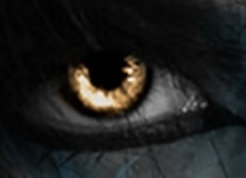The Death Mountain Incident
By James Donahue
It happened on the night of February 2, 1959, in the northern Ural Mountains in Siberia. Nine young
Soviet graduate students, all experienced hikers sharing a short and invigorating break from their studies, perished in what
became one of Russia’s most compelling unsolved mysteries.
Books have since been written about the mystery that occurred on the east shoulder of Kholat Syakhl
Mountain, a name that means Dead Mountain. After setting up camp and buttoning down for the night, something unexplained caused
all nine campers, seven men and two women, to flee in only the bed clothes they were wearing and eventually freeze to death
in minus 22 degree temperatures.
The bodies were found just a little over a mile from the camp. The campers all fled in their bare
feet. The corpses were not cut or bruised, showing no outward signs of a struggle, although two victims had fractured skulls,
two had broken ribs, and one woman, Lyudmilla Dubinina, was found with her tongue and eyes removed. Further examination revealed
extensive internal injuries but not a scratch on the exterior of any of the bodies.
The mystery gets deeper. The tent in which they were staying showed no sign of disorder. Personal
things were lying around undisturbed, and the flaps of the tent doorway were snapped closed. But there were large slashes
in the sides of the tent canvass, as if cut by knives. Did something outside the tent make the cuts, or were the campers frightened
by something that caused them to slash their way out of the tent and into the snow?
Another mystery: why were some of the members of that party found fully clothed while others were
partly naked?
Not all of the bodies were found in the same place. Searchers found the first bodies lying next to
the remains of a burnt-out fire. The leader of the party, Igor Dyatlov, was found not far away. A search dog helped find two
others in the snow. It appeared as if they were trying to get back to the camp to find shelter ut never made it.
The last of the bodies were found two months later in what had been a hollowed out bank of snow that
had been a last-ditch effort to save themselves from the winter cold.
A camera with a roll of film in it was found at the camp. On the film were images of the campers shot
days and perhaps hours before the events that claimed their lives. The last picture on the roll shows the group pitching tents
at the final campground. There was no hint on the roll that anything was wrong when the pictures were taken.
Soviet investigator Lev Ivanov wrote in his report that the nine deaths had been caused by "an unknown
elemental force which they were unable to overcome." In other words, he had no idea why they died.
The place where it happened has been since dubbed "Dyatlov Pass," named for group leader Igor Dyatlov.

